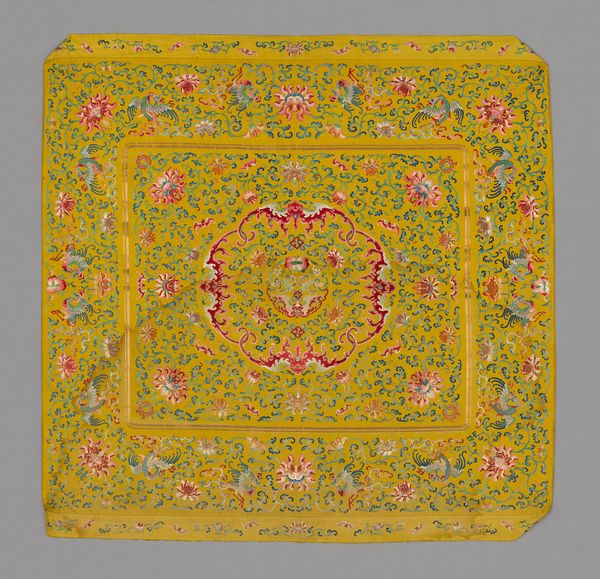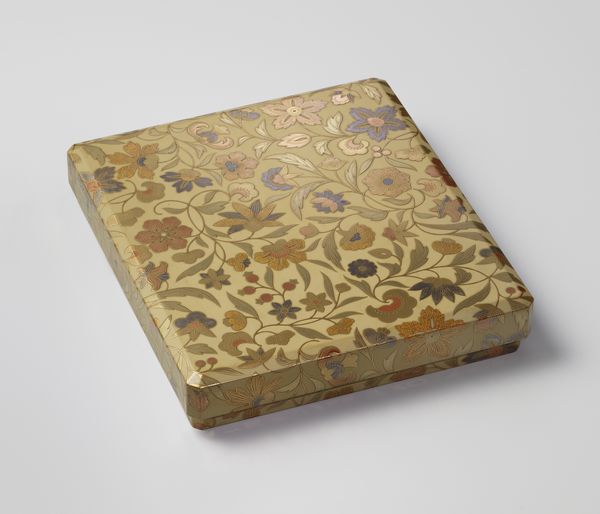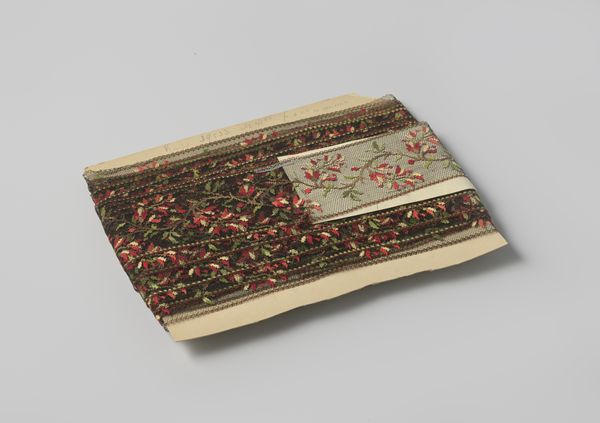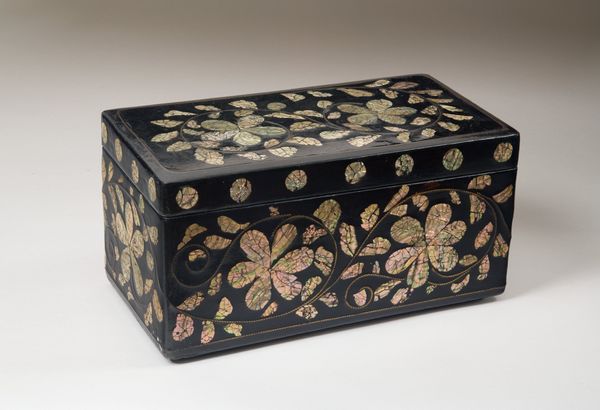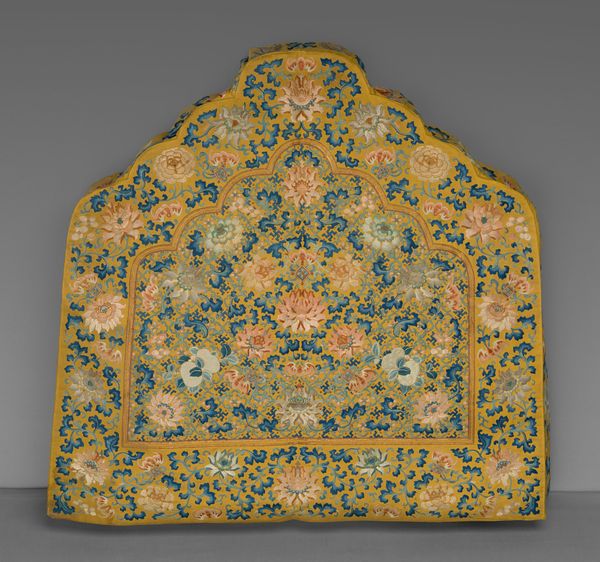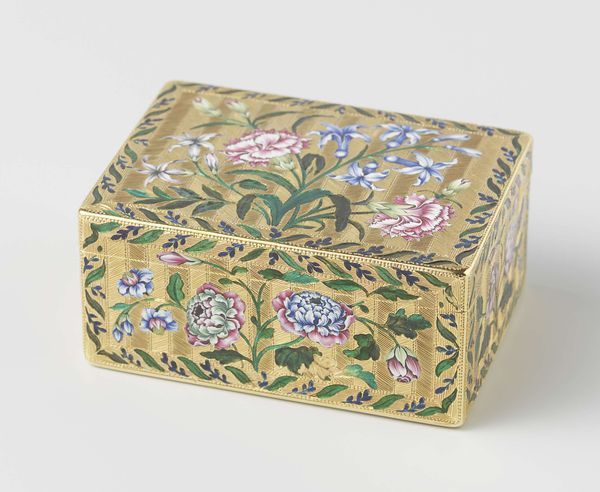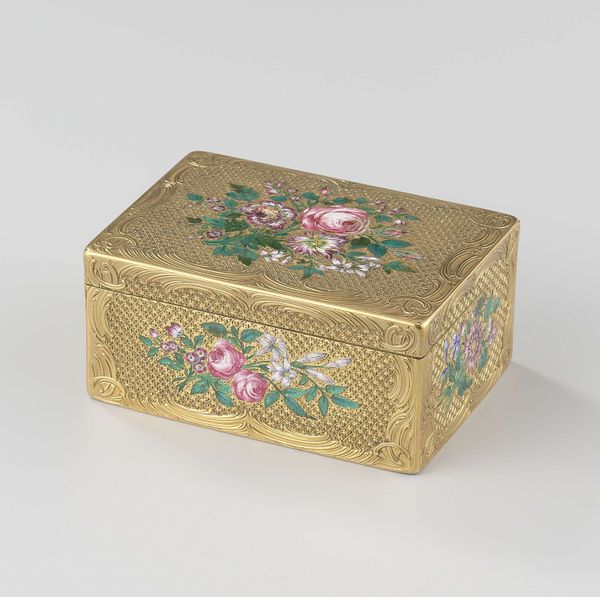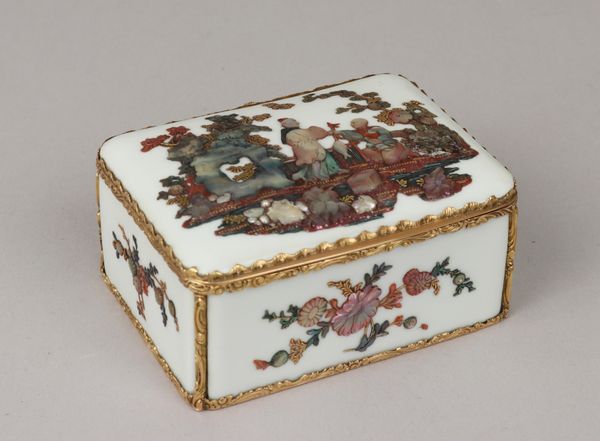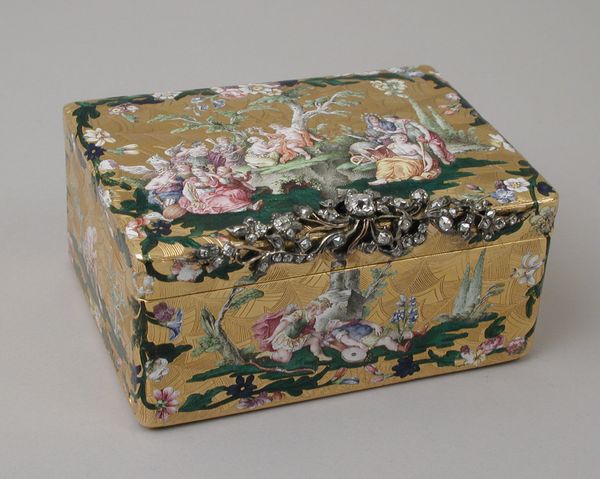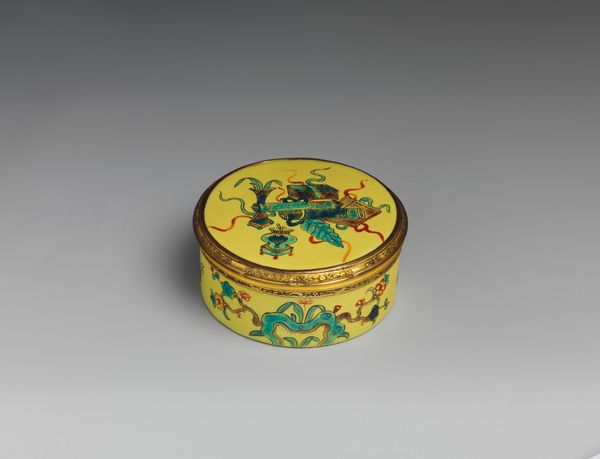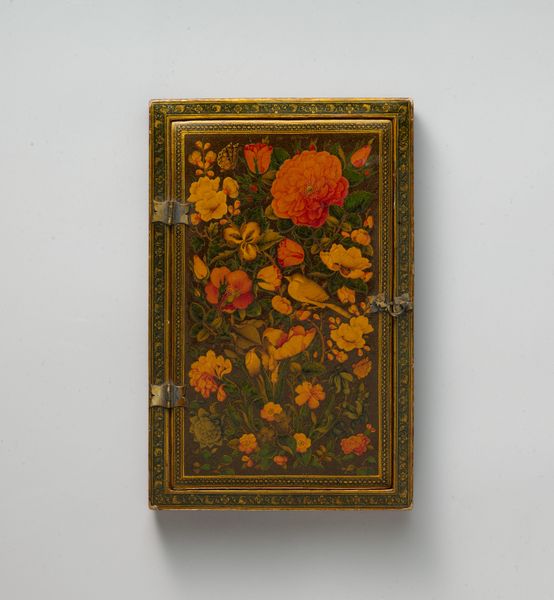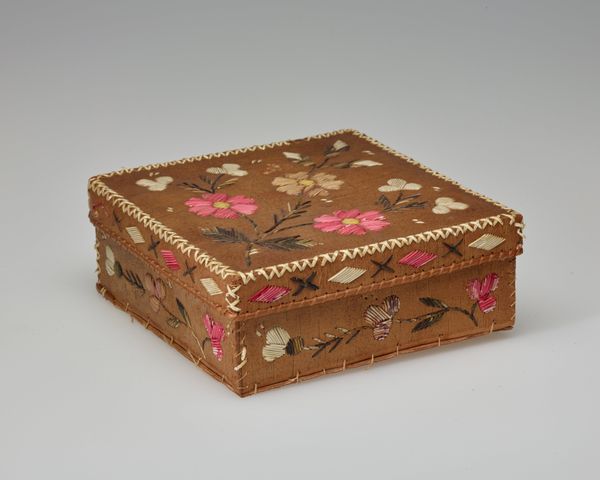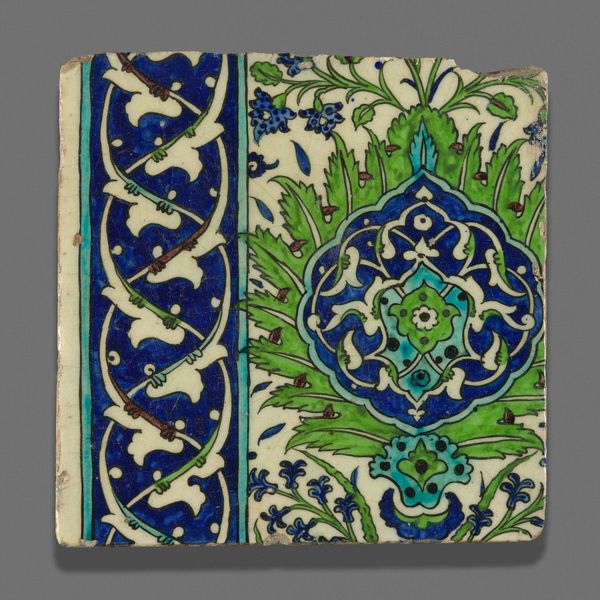
silk, weaving, textile
#
silk
#
pattern
#
asian-art
#
weaving
#
textile
#
china
#
decorative-art
Dimensions: 57.7 × 57.5 × 7.5 cm (22 3/4 × 22 5/8 × 3 in.)
Copyright: Public Domain
Curator: Before us we have a Cushion Cover from China, dated sometime between 1644 and 1911 during the Manchu Dynasty. It’s now held in the collection of the Art Institute of Chicago. Editor: My immediate thought is "opulence." The shimmering gold silk and detailed floral embroidery just scream luxury and comfort. Curator: Absolutely. The pattern is primarily floral, centered around a large blossom in the middle, surrounded by other floral motifs and leafy arabesques. It invites reflection. Floral designs, in traditional Chinese symbolism, frequently relate to feminine virtues and the seasons. What might the original owner have projected onto this object? Editor: It’s difficult to imagine the human hours involved in crafting such a piece, isn’t it? Just consider the chain of production, from silk cultivation and dye extraction to the artisanry of weaving and embroidery, where nimble fingers added complex design… Curator: Think about the context: an era of strict social hierarchies in China, and this elaborate textile communicates the elite status of its commissioner. What meanings were interwoven with the threads? The maker carefully assembled layers of significances through color, form, and motif to subtly showcase power, and celebrate life through rebirth symbolism inherent in floral images. Editor: Right, and the act of weaving, the careful arrangement of warp and weft, can itself be seen as a metaphor for social cohesion, and the making of culture. And perhaps more literally, this kind of production solidified existing power structures in complex ways. How much was that weaver paid? Where did their dyes come from? Who owned those silk worms? These are very practical questions for those seeking to untangle legacies. Curator: We can continue to unravel these threads that tie us to the past and maybe one day understand what such a cover might truly represent. Thank you! Editor: It’s crucial to recognize the tangible resources behind its production and its place within economic and class systems. Thanks!
Comments
No comments
Be the first to comment and join the conversation on the ultimate creative platform.
